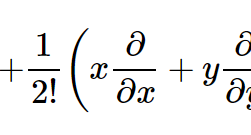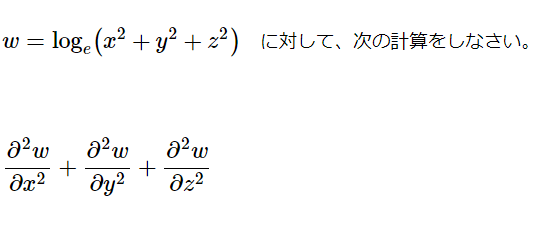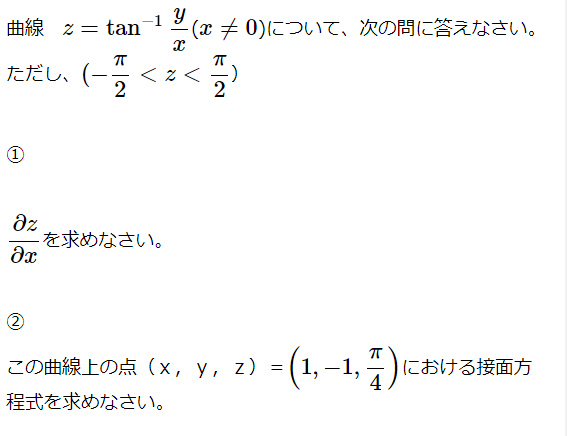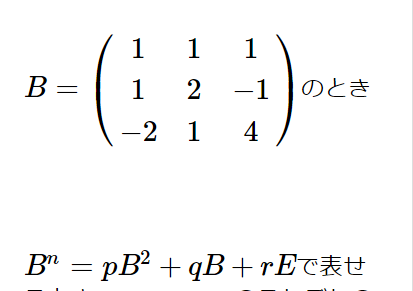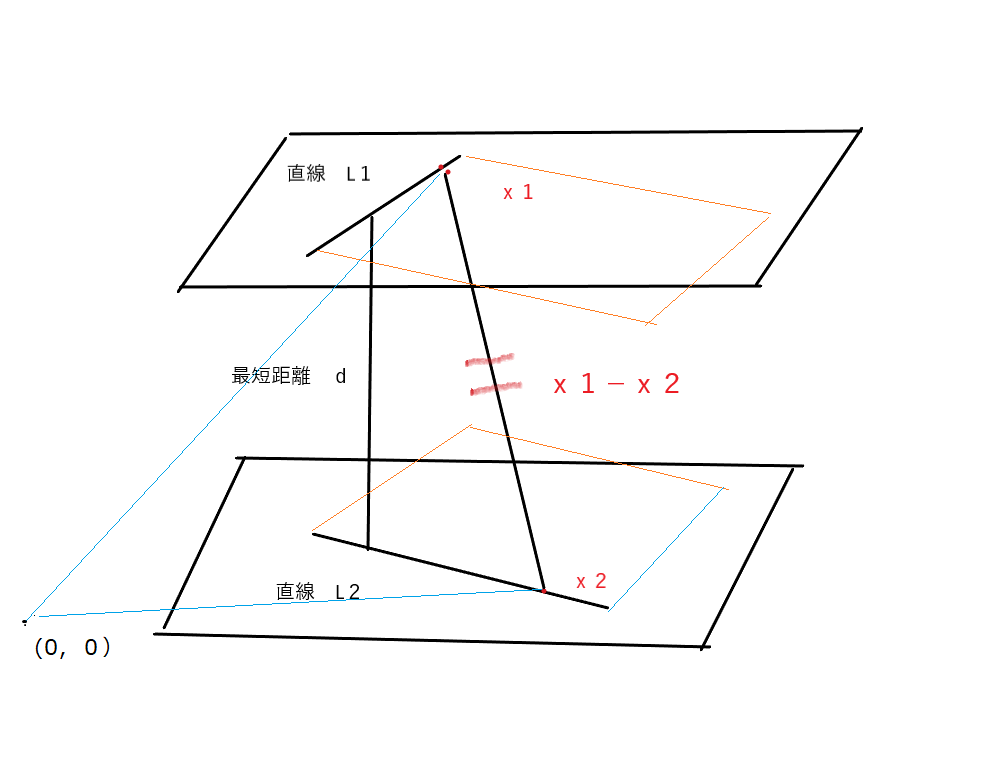
ここで勉強すれば数学検定1級の壁は超えられるか。
微分2の解説(接平面の方程式)

(1)
全微分
[math]\begin{aligned}df=f_{x}\cdot dx+f_{y}\cdot dy\\ =-y\sin \left( xy\right) dx-x\sin \left( xy\right) dy\end{aligned}[/math]
(2)
[math]\left( x,y,z\right) =\left( 1,\dfrac {\pi }{2},0\right)[/math]
[math]\dfrac {\partial f}{\partial x}=-\dfrac {\pi }{2}\sin \dfrac {\pi }{2}=-\dfrac {\pi }{2}[/math]
[math]\dfrac {\partial f}{\partial y}=-1\cdot \sin \left( \dfrac {\pi }{2}\right) =-1[/math]
したがって、接面方程式は
[math]\dfrac {\pi }{2}\left( x-1\right) -1\cdot \left( 4-\dfrac {\pi }{2}\right) =\left( z-0\right)[/math]
まとめると
[math]\dfrac {\pi }{2}x+y+z=\pi[/math]・・・答え
同じカテゴリー「数検1級の微分」の一覧
微分17(2変数関数のマクローリン展開)
2変数のマクローリンの定理 [math]Df=\left( h\dfrac{\partial }{\partial x}+k\dfrac{\partial }{\parti […]
微分15の解説(2階偏微分)
[math]x^{2}+y^{2}+z^{2}+2x+2y+2z=0[/math] のとき [math]\dfrac {\partial ^{2}z}{\partial ^ […]
微分14の解説(3元2階偏導関数)
[math]w=\log _{e}\left( x^{2}+y^{2}+z^{2}\right)[/math] に対して、 [math]\dfrac {\pa […]
微分13の解説(接面方程式)
曲線 [math]z=\tan ^{-1}\dfrac {y}{x}[/math]([math]x\neq 0[/math])は [math]( -\dfrac {\pi }{2}< […]
